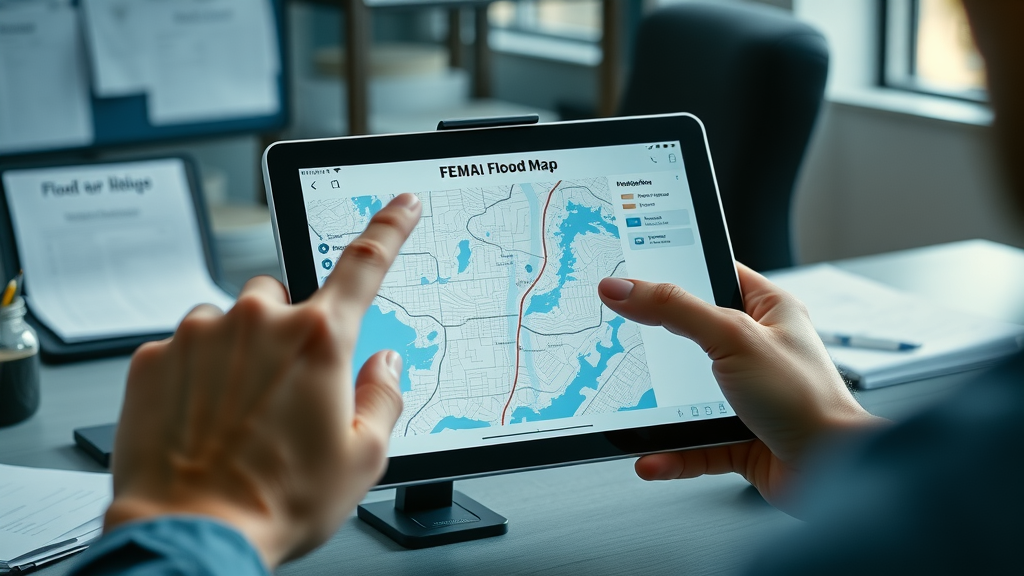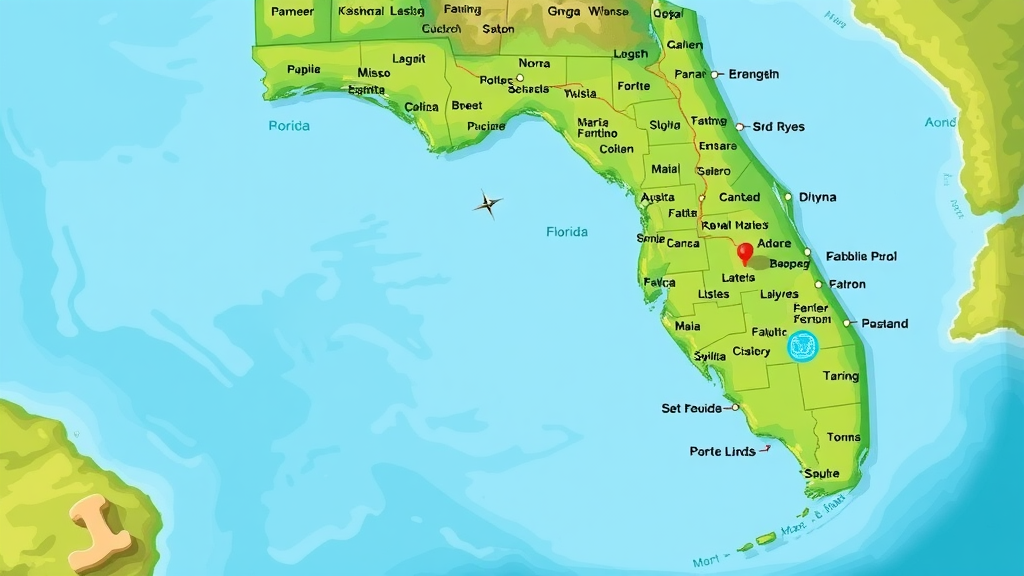Have you ever wondered if there are truly places in Florida where you don’t need flood insurance? Despite common fears about living in the Sunshine State, not every homeowner faces the same risk of flooding. In this deep-dive, we’ll challenge misconceptions, examine critical flood zone data, and explore how changing environments influence the real necessity for flood insurance. If you’re looking for expert insight and actionable advice on making a smart real estate decision in Florida, read on—some answers may surprise you.
Is It Possible to Find Places in Florida Where You Don’t Need Flood Insurance?
For many, Florida conjures images of hurricane season, storm warnings, and devastating floods. Yet, the assumption that flood insurance is required everywhere in the state isn’t always rooted in fact. While certain risk zones —especially coastal or low-lying areas—demand strict flood coverage, other regions stand apart due to geography, elevation, and city planning. Flood maps reveal marked differences, highlighting communities where insurance is not a legal requirement, even if offered as an option for additional peace of mind .
- Challenging the assumption: Is flood insurance always necessary in Florida?
- Changing climate and flood zone dynamics
- Impact of living outside areas required to have flood insurance
It’s important to differentiate between requirements and recommendations. Living inland or in elevated areas —often in zones marked X, C, or B on FEMA’s updated flood maps —may mean you aren’t required to have flood insurance by law or your mortgage lender. Nevertheless, climate shifts and urban expansion can alter historical records over time, so evaluating your precise location and risk profile is key. Ultimately, knowing whether you live in one of these places in Florida where you don’t need flood insurance could save you money—or protect you from financial disaster.

Understanding Flood Zones and Their Impact on Places in Florida Where You Don’t Need Flood Insurance
What Defines a Flood Zone and What Zones Do Not Typically Require Flood Insurance?
Flood zones are classifications assigned by FEMA to indicate a property’s risk level for flooding. FEMA flood maps are the primary tool for identifying these risk levels, using designations like Zone X, C, and B for areas with minimal risk, and Zone A or AE for higher-threat locations. If your property falls within Zone X, C, or B, it means the area is statistically less likely to flood, and if you don’t have a federally-backed mortgage, you may not be required to have flood insurance .
- Explanation of flood zone categories: X, C, and B
- How FEMA flood maps identify risk areas
Flood zone status is updated regularly to reflect the changing landscape and climate impacts. Reviewing the latest flood maps for your county is an excellent start, but it’s also vital to consult with local officials or insurance experts who can interpret nuanced map changes. Remember, being in a “minimal risk” designation doesn’t mean being immune to all natural disasters —it simply means your chance of experiencing a major flood is statistically lower compared to other parts of Florida.

Why Some Areas in Florida Are Not Required to Have Flood Insurance
The most common reason supplemental flood insurance isn’t required in some areas is the assessment conducted by mortgage lenders. They review FEMA’s flood maps , consider elevation above sea level , and evaluate proximity to major water bodies. If they determine the property lies outside high-risk flood zones, no insurance mandate applies. Cash buyers, on the other hand, are under no obligation but may choose insurance for their own protection.
- The process of lenders determining if you are required to have flood insurance
- The role of elevation and distance from water bodies
“Many Floridians assume every property is at high risk of flooding, but careful mapping reveals significant differences across the Sunshine State.”
Additionally, many central and northern Florida communities are naturally shielded from flood damage due to higher elevation or distance from rivers and coastlines. Local governments in these areas may invest in managed drainage systems that further reduce the risk, reinforcing why many insurance policies are optional, not required.
Table: Common Places in Florida Where You Don’t Need Flood Insurance Based on Flood Zone Designations
| City/County | Flood Zone | Flood Insurance Requirement | Elevation |
|---|---|---|---|
| Gainesville | Zone X | Not Required | Above sea level |
| Ocala | Zone X | Not Required | Inland, high elevation |
| Leesburg | Zone X | Not Required | Central Florida |
| Tallahassee | Zone C | Not Required | Elevated terrain |

Key Factors: Why Certain Places in Florida Don’t Require Flood Insurance
- Local geography and elevation
- Drainage infrastructure and city planning
- Changing climate: Does it affect flood zones that traditionally don’t require flood insurance?
The absence of a flood insurance requirement often comes down to factors like higher elevation, well-planned city layouts, and extensive drainage systems. For instance, cities in the central Florida ridge—such as Ocala or Leesburg—sit comfortably above sea level , making major natural disasters less likely. Urban planners in these areas take advantage of elevation and invest in engineered drainage channels to channel water away swiftly during heavy rainfall.
However, as climate patterns shift, these historically “safe” areas aren’t immune from re-evaluations. Some regions once considered low risk now face new challenges from increased rainfall or shifting riverbanks. Continual updates to flood maps and adaptation in city planning ensure that if risks increase, residents are alerted—and flood coverage standards are updated accordingly. Ultimately, a combination of geography, public works investments, and constant monitoring underpins why some places in Florida don’t need flood insurance .

Flood Insurance: Required vs. Recommended in Low-Risk Florida Areas
Should You Get Flood Insurance in Places Not Required by Law?
- Cost-benefit comparison for residents
- Historical flood events in supposedly safe zones
Even if you’re not required to have flood insurance in your area, is it wise to go without it? The answer isn’t always straightforward. For many, the lower cost of insurance in “minimal risk” flood zones can be a bargain for extra peace of mind . But others weigh the odds—historical records might suggest that the chance of flooding is remote, tipping the scales toward skipping extra coverage.
Still, natural disasters can defy calculation. In rare cases, federal disaster relief has been needed for communities outside recognized hazard zones. When evaluating whether to buy flood insurance , consider factors such as how quickly property values recover after a flood, what your standard homeowner’s policy covers (spoiler: it usually does not cover flood damage ), and your tolerance for risk. Your personal aspects—like local flood history or your investment horizon—matter just as much as geographic data.
The Role of Mortgage Lenders in Determining Who Is Required to Have Flood Insurance
- Primary mortgage requirements vs. cash purchases
- Refinance scenarios and risk revaluation
Mortgage lenders operate under federal guidelines that require flood coverage for properties with government-backed loans located in high-risk areas. In low-risk (Zone X or similar) territories, however, coverage is optional. Sometimes, during refinancing or with a change in flood map data, homeowners may unexpectedly be told they must acquire flood insurance for continued loan eligibility. Those who buy homes outright, without a mortgage, aren’t compelled by lenders—but may still weigh the risks and benefits for themselves.
This system means requirements can hinge on fine details—how FEMA’s flood maps label your address, when those maps were last updated, and whether your lender has stricter internal policies. Always get expert consultation and consider the impact of refinancing on insurance obligations.

Video: Visual Guide to Flood Zones and Insurance Requirements in Florida
For an at-a-glance walkthrough, check out a graphic video overview that explains flood zoning and the latest insurance requirements for Florida property owners. (Video content not included in this text version.)
Analysis: The 2024 Outlook for Places in Florida Where You Don’t Need Flood Insurance
Recent Changes to Flood Zone Mapping and What They Mean for Residents
Over the past year, Florida’s flood zone landscape has seen significant updates. FEMA released new flood maps for many counties that reflect erosion, development, and shifting weather patterns. Some areas previously labeled low-risk have been reclassified, while others retained their no-insurance-needed status. Home buyers and current owners must continually revisit the precise location of their properties within updated maps to ensure compliance and proper risk assessment.
If you own property in places like Gainesville, Ocala, or Tallahassee, regularly verify flood zone designations through official websites or apps . City offices and state agencies often provide resources and alerts about map changes. Keeping informed minimizes both surprise costs and uninsured disaster losses—another piece of peace of mind for Florida’s responsible homeowners.
Future Projections: Will More Areas Be Required to Have Flood Insurance?
With climate change intensifying weather events, some experts predict that more places in Florida currently considered safe may be reclassified as higher risk over the coming decade. Rising groundwater, heavier rainfall, and increased urbanization all contribute to a dynamic risk landscape. While modern infrastructure and smart city planning can mitigate threats, ongoing vigilance is required to adapt insurance requirements to reality—not yesterday’s statistics.
For the foreseeable future, many inland and elevated areas will remain outside mandatory flood insurance zones, but informed buyers should continue to stay updated. Investing time in understanding the interplay between location, elevation, and map changes could safeguard both your wallet and your home from future surprises.

Lists of Notable Cities and Counties in Florida Where Flood Insurance Is Not Required
- Alachua County (e.g., Gainesville)
- Marion County (e.g., Ocala)
- Leon County (e.g., Tallahassee)
- Lake County (e.g., Leesburg)
- Parts of Orlando Metro Area

Video: Expert Opinions on Living in Florida Without Flood Insurance
View a panel of insurance agents, homeowners, and meteorologists discuss Florida’s flood risks and the realities of opting out of flood insurance. (Video content not included in this text version.)
Quotes from Homeowners and Real Estate Professionals
“Our community in inland Florida has never faced a flood claim, which keeps our insurance affordable and peace of mind intact.” – Gainesville Resident
“Understanding FEMA maps is essential to know whether you truly need flood insurance or not in Florida.” – Real Estate Agent, Ocala

People Also Ask: Do all homes in Florida require flood insurance?
Explained: Legal flood insurance requirements for Florida homeowners
- Only homes in designated high-risk flood zones with a mortgage are typically required to have flood insurance.
Not all homeowners in Florida are required to carry flood insurance . Insurance policies become mandatory mainly for properties located in FEMA’s high-risk flood zones (such as A, AE, or V) and where the home is financed through a federally regulated mortgage. If you own your property outright or live in a low-risk zone, you are not legally required to obtain flood coverage , though it may still be recommended for your peace of mind .
People Also Ask: What part of Florida doesn’t get flooded?
Areas with the lowest risk of flooding due to elevation and distance from coastlines
- Examples include central and northern inland counties like Alachua, Marion, and Leon.
Regions far from the coast and at higher elevations are generally least vulnerable to flooding. Alachua County (Gainesville) , Marion County (Ocala) , and Leon County (Tallahassee) are just a few examples of places in Florida where you don’t need flood insurance by law, thanks to their topography and thoughtful city planning. Investing in a property in these locations often means avoiding the financial and administrative burden of extra insurance, all while enjoying a lower chance of flooding .
People Also Ask: Where can I live in Florida without flooding?
How to research flood risks before buying property
- Consulting FEMA flood maps and local county resources will help identify the safest locations.
The best way to identify a safe, low-risk area is to consult updated FEMA flood maps and county websites. These resources allow you to search for specific addresses or regions and determine their flood zone designation. By taking the time to gather this information about your activity in the market, combined with other information from local realtors or government agencies, you can make an informed decision with confidence.
People Also Ask: Where in Florida is the lowest risk of flooding?
Breaking down areas by flood zone designation and elevation
- Counties and cities in Zone X or higher elevation areas are at the lowest risk of flooding.
Properties classified as Zone X or situated on elevated terrain experience a reduced risk of major flood events. These corridors often stretch through the central and northern expanses of the state, far from both the Atlantic and Gulf Coasts. Investing in such places in Florida where you don’t need flood insurance weaves a layer of security and cost-savings into your ownership experience, but always verify with the most recent maps and local expertise.

Frequently Asked Questions About Florida Flood Insurance and Flood Zones
- What is Zone X in Florida and does it require flood insurance?
- Can flood zone designations change over time?
- Is a property truly safe from flooding if flood insurance isn’t required?
Zone X indicates a minimal risk of flooding, and homeowners in this zone are not required by federal law to purchase flood insurance . However, flood zone designations change over time due to new mapping and changing environmental conditions. Even if your property isn’t in a high-risk zone now, staying vigilant and reassessing your insurance needs regularly is prudent. Remember, “not required” doesn’t always mean “not recommended”—unpredictable natural disasters can still happen, and extra peace of mind may be worth the cost to some families.
Summary: Are There Really Places in Florida Where You Don’t Need Flood Insurance?
- Flood risk is highly localized in Florida.
- Understanding your flood zone is crucial before purchasing property.
- Expert advice and updated data are key for informed real estate decisions.
Actionable tip: Before you purchase or refinance in Florida, always review current FEMA flood maps , consult a local insurance expert, and weigh the peace of mind that even optional flood insurance can offer.




